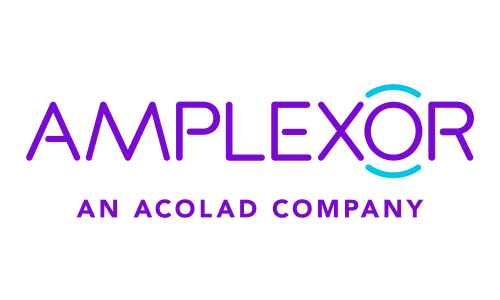By Amplexor Life…
Amplexor says new IDMP identification standards will require RIM changes
Luxembourg: –Global life sciences software solutions provider Amplexor Life Sciences has provided further guidance on implications flowing from the EU’s new Identification of medicinal products (IDMP) standards.
In its latest blog, the company’s UK-based Global Strategic Accounts Consultant, Ian Crone, says pharma companies who now need to deal with data-driven medicinal product identification will ‘come unstuck’ without a full regulatory information management (RIM) system in place.
Marathon path
Mr. Crone points out that becoming ‘IDMP ready’ is a marathon, rather than a sprint, with the key success factor being accurate choice of most appropriate migration path.
“There are two important truths to take forward,” Crone writes.
“One, after all the theorizing and scaremongering, IDMP is suddenly real (in Europe, at least).
“Two, this is not a one-time undertaking: compliance will be a staged, iterative affair as requirements evolve – and should be approached as such.”
He says the starting point for moving to full IDMP compliance will vary from one pharma company to the next, offering three scenarios.
Scenario 1: No RIM system
The first (and worst) scenario is that the company has no formal RIM system in place.
“Companies that are still managing the bulk of their regulated product information using spreadsheets – perhaps because of their modest size – will come unstuck in an IDMP data-driven world,” Crone warns.
“These organizations will need to start looking for a solution which, even if it doesn’t have full IDMP provision right now, provides a clear path to compliance (in other words, the vendor has a clear vision and roadmap for IDMP linked to its RIM offering.
Scenario 2: Inadequate RIM system
His second scenario focuses on need to make further investment in an existing RIM system.
“Larger pharma companies which have already deployed a RIM system will need to assess to what extent IDMP features in their software vendor’s plans. An evolving RIM solution may well have IDMP on its near horizon, enabling the organization to minimize disruption and maximize the return on its existing investment by upgrading to next-generation product releases,” Crone notes.
“On the other hand, if up to now the existing supplier has been slow to fulfil pledges to introduce eCTD publishing options, xEVMPD provision, analytics, or gateways to regulatory authority portals, it will be prudent to press them for plans for delivering IDMP capabilities. If the response isn’t satisfactory, it may be time to consider an alternative RIM supplier with future proofing built more tangibly into its approach,” Crone explains.
Scenario 3: Holistic RIM approach
His third scenario focuses on a more open-source and holistic approach.
“For a long time now the life sciences software industry has advocated developing a ‘single source of truth’ for regulated product information – a master source that can be relied upon across multiple operational functions and content use cases. But this shouldn’t mean that pharma companies have to pick a single vendor’s software to deliver everything. As life sciences moves to a data-driven, IDMP-based approach to regulatory process management and product look-up, companies would be effectively entrusting all of their medicinal product intelligence to a single software provider – creating a single point of vulnerability and risk,” says Mr. Crone.
He believes a more sustainable and less exposed approach would be to standardize on an open-standards based infrastructure or platform that supports connectivity and data exchange with function-specific applications, via APIs. Thus, instead of having a single RIM provider, companies might choose best-of-breed suppliers specifically for document management, eCTD, analytics, IDMP, etc.
“There are pharma companies already taking this approach today, and it’s working very well for them. It could well be the smarter move. After all, pharma brands wouldn’t source all their raw materials from a single manufacturer,” Mr. Crone points out.
IDMP proof-of-concept
“It’s important for life sciences companies to look more closely at the paths from each scenario and discuss low-risk/minimal-cost options for developing an IDMP proof-of-concept alongside companies’ existing RIM set-ups, to test how expandable their current situations are and which IDMP option is likely to fit best,” he adds.
Amplexor also hosted a recent webinar on the role of RIM in achieving IDMP compliance. (see Resources).
About AMPLEXOR
A member of the Acolad global family of companies, Amplexor Life Sciences is a software solutions provider that supports the global life sciences industry in achieving their goals by providing the most innovative content and process management solutions and the highest quality services.
The Amplexor product and solutions portfolio for pharma, biotech and medical device customers focuses on regulatory compliance, specializing in holistic Regulatory Information Management (RIM) and Quality Management System (QMS) solutions, and it is closely coupled with business knowledge and consultative services.
Amplexor’s suite of software solutions enables users to manage multi-lingual data, content, and documents as well as regulatory submissions, quality processes and adverse event reports across the entire product lifecycle.
Find out more at: https://www.amplexor.com/en/life-sciences-suite.html
About IDMP
IDMP is a suite of five standards developed within the International Organization for Standardization (ISO) designed to provide an internationally-accepted framework for unique identification and description of medicinal products, using consistent documentation, coding and exchange of product information between global regulators, manufacturers, suppliers and distributors.
The five IDMP standards are:
ISO 11615 Medicinal Product Identification: MPID describes the detailed data elements and their structural relationships required for the unique identification of regulated medicinal products.
ISO 11616 Pharmaceutical Product Identifier: PhPID uniquely associates medical products with the same or similar pharmaceutical composition based on data elements of substance, strength, units of measurement/presentation, reference strength and dosage form.
ISO 11238 Substance Identification: SubID defines substances that constitute a medicinal product by their main, general characteristics
ISO 11239 Dosage Form and Route of Administration: Describes data elements and structures for unique identification and exchange of regulated information on pharmaceutical dose forms, units of presentation, routes of administration and packaging.
ISO 11240 Units of Measurement: UoM specifies rules for the usage of units of measurement, establishes requirements to provide for traceability to international metrological standards, defines requirements for representation of units of measurement in coded form, provides structures and rules for mapping between different unit vocabularies and language translations.
Find out more at: www.ema.europa.eu/en/human-regulatory/overview/data-medicines-iso-idmp-standards-overview
Resources
Click on Now that IDMP is real, is your RIM roadmap on the right track? to read original blog article.
Click on Amplexor webinar: Now that IDMP is real, is your RIM roadmap on the right track? for further details.
Click on Get IDMP Ready to learn more about Amplexor onboarding program.


















